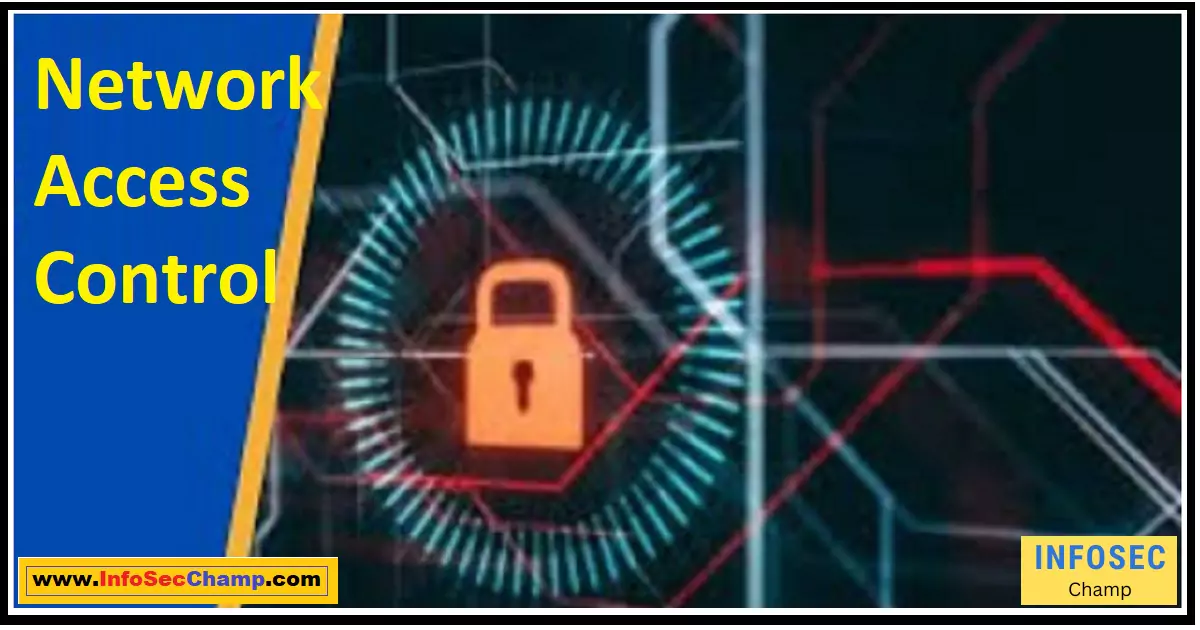In today’s hyperconnected business environment, network security is more crucial than ever. Yet many organizations still lack adequate network access control to guard their digital assets. Without stringent access management policies and solutions in place, your network edges remain porous and exposed. This leaves you vulnerable to data breaches, malware infestations, and insider threats that can devastate your operations. Implementing robust network access control is no longer optional for enterprises that value data security.
By controlling who and what can access your network infrastructure and resources, you gain visibility and control over digital touchpoints. Advanced network access control technologies enable you to set policies, monitor compliance, and take actions based on user behaviors. Now is the time to lock down your digital perimeter with network access control best practices tailored to your unique needs. Read on to discover the top network access control strategies and solutions for hardening your defenses in the face of mounting cyber risks.
Network Access Control: A Critical Part of Enterprise Security
– Network access control (NAC) is an essential security capability for managing access to corporate networks and resources.
– NAC solutions provide visibility into devices connecting to the network, enforce security policies, segment access, and restrict unsafe or unauthorized devices.
– Key benefits of NAC include reducing the attack surface, preventing malware spread, enforcing least privilege access, and enabling compliance.
– NAC has become a must-have for security-conscious enterprises across industries like finance, healthcare, government, and more.
– With the growth of BYOD and IoT, NAC is critical for limiting lateral movement and mitigating insider threats.
– Leading industry analysts like Gartner have marked NAC as an important strategic technology for security and risk management.
– While firewalls provide perimeter defenses, NAC delivers layered internal controls for securing the expanding digital attack surface.
Challenges of Securing Distributed and Dynamic Environments
– Securing today’s complex hybrid environments with remote users, BYOD, guest networks and cloud infrastructure poses security challenges:
– Rapid proliferation of devices makes asset management and tracking difficult.
– Lack of endpoint visibility enables threats to sneak in and laterally spread.
– Dynamic networks mean security policies must align to contexts like user, device, and location.
– Distributed networks increase vulnerability to malware, data exfiltration, and insider misuse.
– IoT and transient devices are hard to secure with traditional agent-based NAC.
– Encrypted traffic limits visibility into malicious activity for network security tools.
– Microsegmentation and least privilege access are difficult in fluid environments.
– These challenges demonstrate why adaptive NAC is so critical for modern networks.
Essential Capabilities of Network Access Control Solutions
– Device discovery and profiling
– Real-time visibility into managed and unmanaged devices
– Continuous monitoring and assessment
– Granular policy enforcement
– Risk-based access controls
– Automated response and remediation
– Threat intelligence integration
– Microsegmentation for least privilege
– Integration with other security systems
– Dynamic identity and context-aware policies
– Application layer controls
– Flexible deployment options (on-prem, cloud)
– Scalability to support digital growth
– Reporting, analytics, and auditing
Top Use Cases and Benefits of Strong Network Access Control
| Use Cases | Benefits |
|---|---|
| BYOD security | Reduce attack surface by restricting personal devices |
| Guest network access | Secure external connections to the corporate network |
| Contractor and third-party access | Manage external party access to confidential data |
| Cloud Security | Consistent access controls across on-prem and cloud |
| Wireless network security | Limit network access for unauthorized WiFi devices |
| IoT security | Visibility and control over unmanaged IoT devices |
| Insider threat protection | Detect risky user behavior and limit access |
| Regulatory compliance | Enforce policies to meet regulations like HIPAA, PCI DSS, etc. |
| Malware prevention | Block and quarantine infected endpoints |
Key Elements to Consider When Evaluating NAC Products
– Architecture: On-prem vs cloud deployment models
– Discovery: Agent vs agentless device profiling
– Policy engine: Rules, context-aware controls, micro-segmentation capabilities
– Enforcement: Network-based vs endpoint-based restriction capabilities
– Integration: APIs, connectors to integrate with security and IT systems
– Threat intelligence: Use of current threat data to identify high-risk devices
– Deployment: Ease of installation, upgrades, and maintenance needs
– Reporting and analytics: Visibility into access patterns, audit logs, metrics
– Scalability: Load balancing, and clustering to support network growth
– Support: Technical support services, customer success programs
– Pricing: Upfront costs, subscription models, licensing tiers
On-Prem vs Cloud-Based Deployment Considerations
| On-Prem NAC | Cloud-Delivered NAC |
|---|---|
| Physical or virtual appliances deployed in data centers | Software-as-a-service model |
| Maintained onsite by IT staff | Hosted and managed by the vendor |
| May require hardware upgrades | Elastic scalability in the cloud |
| Works offline if the network is down | Requires internet connection |
| Real-time onsite user experience | Potential access latency |
| Full control over customization | Limited customization options |
| CapEx spending | OpEx spending |
| Limited agility for global enterprises | Unified policy controls across locations |
Integrating NAC with Your Existing Security Infrastructure
– Integrating NAC with security and IT systems enhances defenses and streamlines workflows.
– Key integration capabilities:
– SIEM: Forward NAC data like alerts to SIEM for correlation
– Firewalls: Enforce firewall access rules triggered by NAC policies
– Endpoint security: Coordinate network and endpoint policies and responses
– Vulnerability scanners: Import scan results to dynamically restrict vulnerable devices
– MDM/EMM: Coordinate network and mobile device policies
– Ticketing systems: Auto-generate tickets for NAC policy violations
– User directories: Synchronize NAC identity policies with user profiles
– Web proxies: Enforce web policies on restricted devices
– API: Programmatically interact with NAC to pull data or trigger responses
– Tight integration avoids security gaps and enables unified policies.
Best Practices for Rolling Out and Configuring Network Access Control
– Phase deployment to simplify rollout across locations, network segments, and user/device groups.
– Create NAC policies based on business needs and risk levels. Address the highest risks first.
– Align NAC controls with existing security policies to optimize integration.
– Limit network access capabilities for BYOD and guest devices.
– Use micro segmentation to restrict lateral movement across network zones.
– Set up automated remediation actions like triggering OS patches for non-compliant devices.
– Leverage dynamic identity policies to tie access rights to user roles and contexts.
– Start with advisory mode to tune policies before automated enforcement.
– Communicate NAC policies and restrictions to users to minimize disruption.
– Continuously tweak policies as the network and threat landscape evolves.
– Maintain good patching and configuration hygiene for NAC servers and endpoints.
Compliance Benefits of Implementing Comprehensive Access Management
– NAC helps address compliance requirements around network security controls and access management including:
– HIPAA
– PCI DSS
– SOX
– GDPR
– NIST CSF
– Key capabilities that support compliance:
– Identity and context-aware access policies
– Granular segmentation to limit access
– Device visibility for inventory tracking
– Continuous endpoint compliance monitoring
– Automated policy enforcement
– Detailed logging for audits
– With solid NAC practices, organizations can demonstrate due care and compliance rigor to auditors and regulators.
How Artificial Intelligence is Advancing Network Access Control
– AI and machine learning enhance NAC with:
– Unsupervised learning to profile normal behavior vs anomalies
– Predictive models to classify risks and make access decisions
– Automated policy tuning based on network traffic analysis
– Augmenting threat intel to detect emerging attack patterns
– Key machine learning use cases for NAC:
– User and entity behavior analytics (UEBA)
– Dynamic risk scoring of endpoints to enable adaptive access
– Automated micro-segmentation recommendations
– Root cause analysis to accelerate incident response
– AI allows NAC to scale policy enforcement and adapt to new threats.
The Risks of Skimping on Network Security Hygiene
Neglecting basic network access control measures puts organizations at greater risk of:
– Data breaches from infected endpoints accessing sensitive systems
– Ransomware, crypto-miners, and malware spreading unchecked across the network
– Unmanaged IoT devices opening backdoors to network resources
– Unsecured BYOD and guest devices exposing attack paths
– Non-compliant systems falling out of regulatory obligations
– Unauthorized access and misuse of confidential data by insiders
– Lack of network visibility obscuring threats and hindering response
Robust NAC policies and solutions are fundamental network security hygiene that reduces risk exposure.
Quantifying the ROI of Network Access Control Investments
– Cost savings from increased automation and operational efficiency
– Reduced spending on the incident response from fewer infections
– Lower compliance audit preparation costs due to improved controls
– Cyber insurance premium discounts for strengthened security posture
– Avoided costs from potential breaches, outages, and fines
– Improved productivity from better network reliability and performance
– IT staff time savings from automated policy enforcement
– Increased revenue from improved customer trust and retention
Leading NAC solutions typically pay for themselves within 6-12 months.

Great 10 Ways Network Access Control Strengthens Your Security Posture
1. Restricting devices to least privileged access
2. Isolating and containing compromised endpoints
3. Preventing lateral threat movement across the network
4. Gaining visibility into all devices on the network
5. Automating policy enforcement for scale
6. Accelerating incident response actions
7. Meeting compliance mandates around access
8. Stopping infiltration of unsecured IoT devices
9. Blocking unauthorized personal and guest devices
10. Hardening network perimeters with layered control
The Future of Network Access Control in Zero Trust Frameworks
NAC will be integral for zero trust architecture strategies which:
– Verify all users and devices before granting the least privileged access
– Leverage micro-segmentation and granular controls
– Continuously monitor for threats and anomalies after access
– Adapt access dynamically based on risk scoring
– Integrate all access decisions across edges, networks, apps, data
– Align to business needs and risk tolerance
– Provide comprehensive visibility across environments
NAC delivers key zero trust building blocks like device posture validation, contextual policies, and micro-segmentation.
Top Network Access Control Vendors and Product Comparisons
| Vendor | Product | Description |
|---|---|---|
| Cisco | Cisco Identity Services Engine (ISE) | Integrated wired/wireless NAC with endpoint compliance and profiling. |
| Forescout | Forescout eyeExtend | Agentless NAC with device visibility and orchestration capabilities. |
| Juniper Networks | Juniper Networks Policy Enforcer | AI-driven policy automation across networks, endpoints, and the cloud. |
| Aruba Networks | ClearPass | Context-aware NAC for dynamic access control and automated response. |
| Extreme Networks | ExtremeControl | Unified wired and wireless access management with AD integration. |
Making the Case for Budget to Implement Network Access Control
– Summary of key NAC benefits: reduced risk, operational efficiency, breach avoidance
– Market validation: Analyst recommendations (Gartner, Forrester)
– Compliance necessity: Address audit findings, meet regulatory requirements
– Risk metrics: Security gaps, incident patterns pointing to the access management issue
– Financial impact: Hard and soft cost savings, risk mitigation value
– Customer retention: Enhanced trust and satisfaction through security
– Competitive parity: Adoption by peers to close security gaps
– Business enablement: Secure BYOD, IoT, mobility, cloud transformation
– Future-proofing: Align to zero trust trajectory
Real-World Examples of NAC Protecting Against Breaches
– Hospital halted the spread of ransomware outbreak by containing infected systems, preventing wide-scale clinical disruption.
– University limited breach impact by preventing unauthorized access to sensitive systems containing student records.
– Retailer blocked exfiltration of customer credit card data by quarantining infected PoS systems at multiple stores.
– Energy firm thwarted a destructive wiper malware attack by using NAC to rapidly isolate and remediate affected sites.
– Government agencies prevented exploit of vulnerable applications by strictly limiting access to authorized users based on NAC policy.
Questions to Ask When Selecting a Network Access Control Solution
– How are devices discovered and profiled? What about unmanaged IoT devices?
– Can policies be customized based on user, device, application, and other context?
– Does it integrate with other security systems like firewalls and SIEM?
– Can it automatically respond to threats by containing devices?
– What deployment options are available? On-prem vs cloud?
– How are policies designed and managed?
– What compliance mandates does the solution help meet?
– Does it allow phased rollouts to simplify adoption?
– How quickly can policies be updated?
– How are users notified of NAC enforcement actions?
– What reporting and analytics capabilities are included?
Key Metrics to Track to Optimize Your NAC Solution
– Policy violation trends: Identify gaps needing tighter controls
– Policy triggered actions: Assess frequently required responses
– Mean time to containment: Benchmark incident response efficacy
– High-risk devices: EvaluateAsset profiles needing tighter restrictions
– Unauthorized access attempts: Detect holes in identity policies
– Endpoint compliance rates: Prioritize strengthening weak endpoints
– System integration efficacy: Ensure coordinated defensive actions
– Operational efficiency gains: Track admin time savings from automation
– Policy coverage: Ensure controls are applied comprehensively
Conclusion:
Robust network access control is now an essential pillar of enterprise security. With remote and mobile workforces accessing more distributed and dynamic environments, legacy perimeter defenses are no longer enough. Implementing NAC visibility, granular policies, and automated controls across your network has become imperative to reduce risk.
By strategically evaluating your needs and environments, selecting advanced NAC solutions tailored to your use cases, and methodically rolling out policies aligned to business priorities, you can effectively strengthen your security posture. With powerful modern NAC, capabilities applied comprehensively, you gain the network governance needed to secure your digital infrastructure for today’s hyperconnected world.
FAQs:
Q: What is network access control?
A: Network access control (NAC) solutions manage and control access to network resources and infrastructure based on user, device, and other contextual policies.
Q: How does network access control work?
A: NAC discovers devices, and profiles and classifies them, then grants access based on identity, security posture, and dynamic policies while preventing unapproved access.
Q: What are the benefits of network access control?
A: Key benefits include reducing attack surface, stopping malware spread, enforcing least privilege access, and meeting compliance mandates.
Q: What does a network access control solution include?
A: Core NAC capabilities are real-time visibility, granular policy enforcement, endpoint compliance monitoring, automated responses, and integrated threat intelligence.
Q: Is network access control required for compliance?
A: Yes, many regulations like HIPAA, PCI DSS, and GDPR include network access control requirements.
Q: Does network access control replace firewalls?
A: No, NAC complements perimeter firewalls with internal, identity-aware access controls.
Q: Are network access control solutions expensive?
A: Leading NAC solutions deliver a compelling ROI from lower risk and operational efficiencies.
Golden Quotes:
“Access control is essential for securing expansive network environments.”

